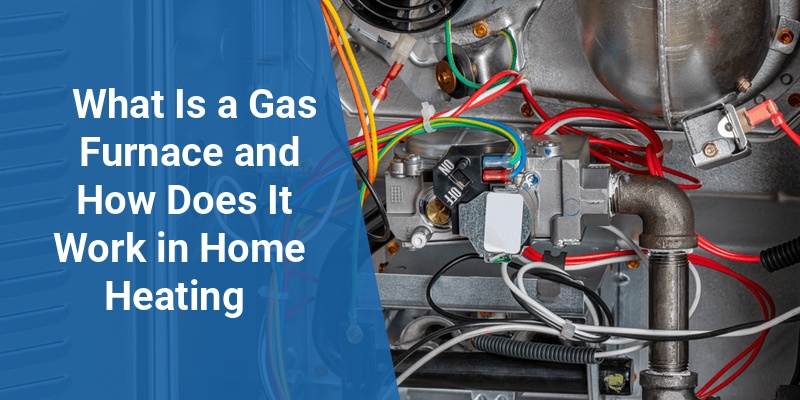A gas furnace is a popular home heating system that uses natural gas to produce warmth during cold weather. It is known for its efficiency and reliability in heating residential spaces across the United States. This article explores what a gas furnace is, how it operates, its components, benefits, and considerations for homeowners seeking an effective heating solution.
| Aspect | Details |
|---|---|
| Definition | A heating appliance that burns natural gas to generate heat for indoor spaces |
| Main Components | Burner, heat exchanger, blower, thermostat, and venting system |
| Energy Source | Natural gas |
| Common Usage | Residential heating in colder climates |
| Key Benefits | High efficiency, cost effectiveness, quick heating |
How a Gas Furnace Operates
A gas furnace works by igniting natural gas to produce heat, which is then distributed throughout the home via a duct system. When the thermostat senses that room temperature has dropped below the set level, it signals the furnace to start. The burner ignites the gas, heating the heat exchanger. Air blown over the heat exchanger absorbs this warm heat and is circulated by the blower fan through the home’s ducts.
Exhaust gases produced by combustion are safely expelled through a vent or chimney, ensuring indoor air quality is maintained. This process repeats to keep indoor spaces warm and comfortable.
Main Components of a Gas Furnace
- Burner: Where the natural gas combustion occurs.
- Heat Exchanger: Transfers heat from burning gas to the air without mixing the exhaust gases.
- Blower Fan: Circulates warmed air through the ductwork into living spaces.
- Thermostat: Controls furnace operation based on indoor temperature readings.
- Venting System: Safely removes combustion exhaust to the outside.
- Ignition System: Can be a pilot light or electronic ignition to start the burner.
Advantages of Using a Gas Furnace
- Energy Efficiency: Modern gas furnaces achieve efficiency ratings over 90%, offering significant energy savings.
- Cost-Effective Heating: Natural gas is generally cheaper than electricity and heating oil.
- Rapid Warm-Up: Provides fast and consistent heating compared to electric systems.
- Reliability: Gas furnaces are durable and require minimal maintenance with proper servicing.
- Environmental Impact: Produces fewer emissions compared to oil or coal heating systems, especially with high-efficiency models.
Types of Gas Furnaces
| Type | Description | Efficiency Range |
|---|---|---|
| Single-Stage Furnace | Operates at full capacity or off, suitable for mild climates. | 80% – 85% AFUE |
| Two-Stage Furnace | Offers high and low heat settings to improve comfort and efficiency. | 85% – 90% AFUE |
| Modulating Furnace | Adjusts heat output continuously for optimal efficiency and comfort. | 90%+ AFUE |
Installation and Maintenance Considerations
Proper installation by a licensed HVAC professional is crucial for efficient and safe operation. Placement, ductwork design, and venting must comply with local building codes. Regular maintenance including cleaning or replacing filters, inspecting burners, and checking for gas leaks ensures longevity and efficiency.
Annual inspections and servicing can prevent common issues such as:
- Decreased efficiency
- Incomplete combustion leading to carbon monoxide risks
- Wear and tear on mechanical components
Gas Furnace vs. Other Heating Systems
| Heating System | Fuel Source | Pros | Cons |
|---|---|---|---|
| Gas Furnace | Natural Gas | Cost effective, fast heating, widely available | Requires gas line, potential carbon monoxide risk |
| Electric Furnace | Electricity | Safer operation, easy installation | Higher operating costs, slower heating |
| Heat Pump | Electricity | Energy efficient for moderate climates, cooling ability | Less effective in extreme cold |
| Oil Furnace | Heating Oil | Effective in cold climates | More expensive fuel, higher emissions |
Safety Features and Best Practices
Gas furnaces include multiple safety mechanisms such as flame sensors, limit switches, and carbon monoxide detectors. It is critical for homeowners to ensure these systems are functional and to install carbon monoxide alarms in their homes. Awareness of gas leaks, unusual odors, or furnace malfunctions is important to prevent hazards.
Best practices for safe furnace use include:
Call 888-906-9139 for Free Local HVAC Quotes – No Obligation, Just Savings!
- Scheduling annual professional inspections
- Keeping the area around the furnace clean and unobstructed
- Replacing air filters regularly
- Monitoring for warning signs like yellow pilot flames or strange noises
Choosing the Right Gas Furnace for Your Home
Selecting a gas furnace involves considering home size, climate, budget, and energy goals. High-efficiency models, while costlier upfront, can lower energy bills over time. Consulting an HVAC specialist for load calculations and recommendations ensures the chosen furnace matches your heating needs.
Factors to consider when choosing a gas furnace:
- Annual Fuel Utilization Efficiency (AFUE) rating
- Size and capacity aligned with home square footage
- Compatibility with existing ductwork
- Warranty and manufacturer reputation
